
I read the article “Digital Ghosts in the Modern Classroom” by Ashley Hinck, and I created a Twitter essay in response. And no, Hinck does not talk about the kind of ghosts Scooby Doo is afraid of. These ghosts are the ghosts of worksheets and tests in school where there is only one right answer, and the student’s main goal is to come up with whatever answer will please the teacher.
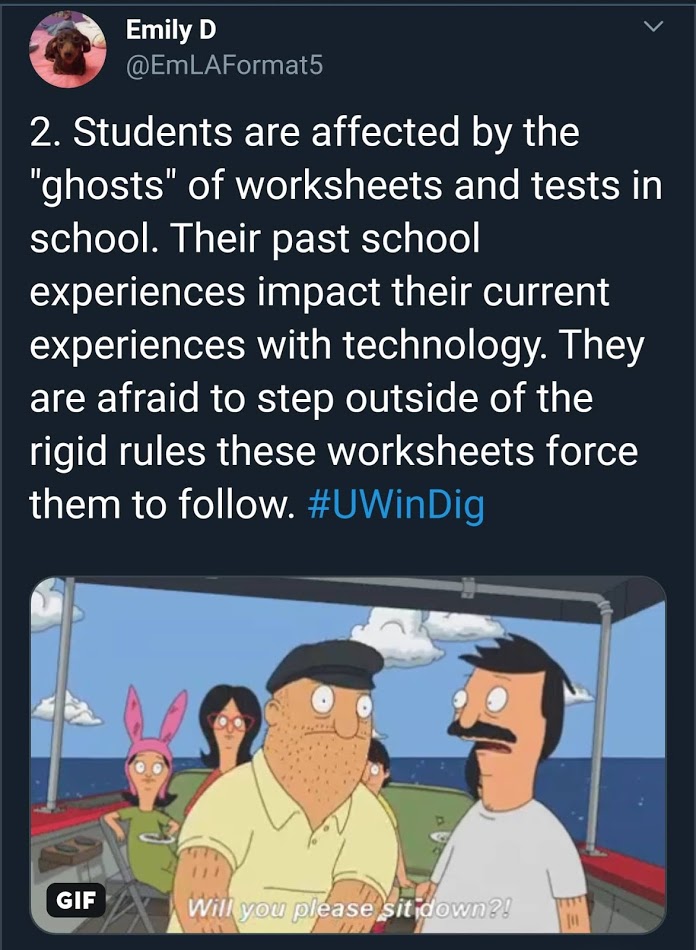
Essentially, Hinck argues that drag and drop templates are the same as mass-produced worksheets in school that leave no room for multiple answers. We have to break away from these template/shortcut platforms and encourage our students to make new creative content from scratch.
Tools like Canva templates, Snapchat filters, and Facebook’s posting system give the illusion of creativity, but students are really only inserting information without creating anything new. Teaching students how to use tools like Scratch, HTML and CSS allows for more than just an illusion; it is a concrete way for students to create content on their own, without the work already being done for them.
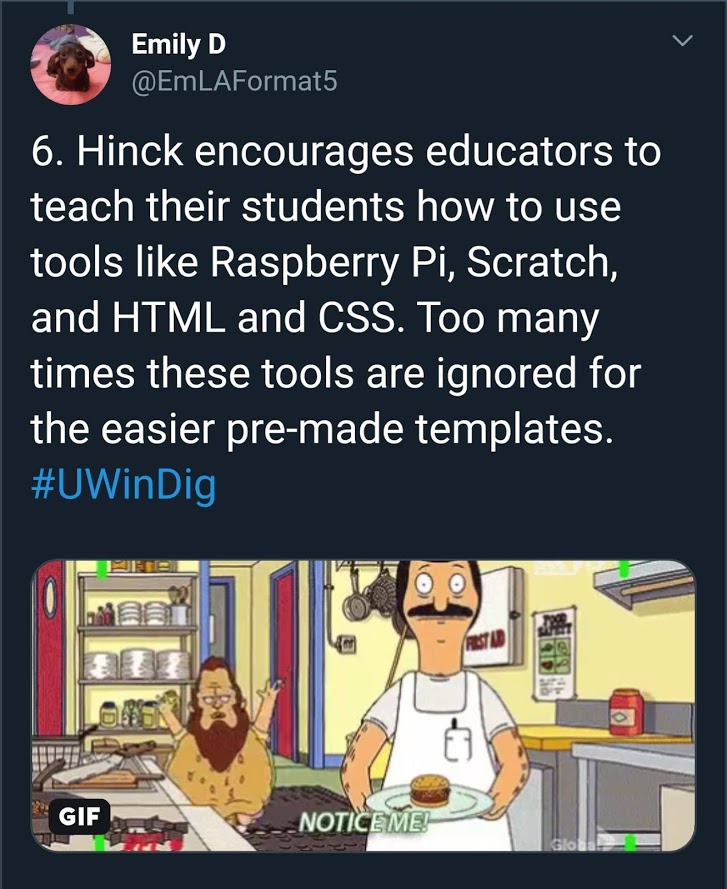
Hinck argues for a total reinvention of how we think about the learning process. Students are too used to doing what they think will make the teacher happy. This ensures they get a good mark, but they aren’t actually learning. Instead, we have to see learning as a trial and error process. We have to stop fearing mistakes and failure, because failure shows us that something is fixable.
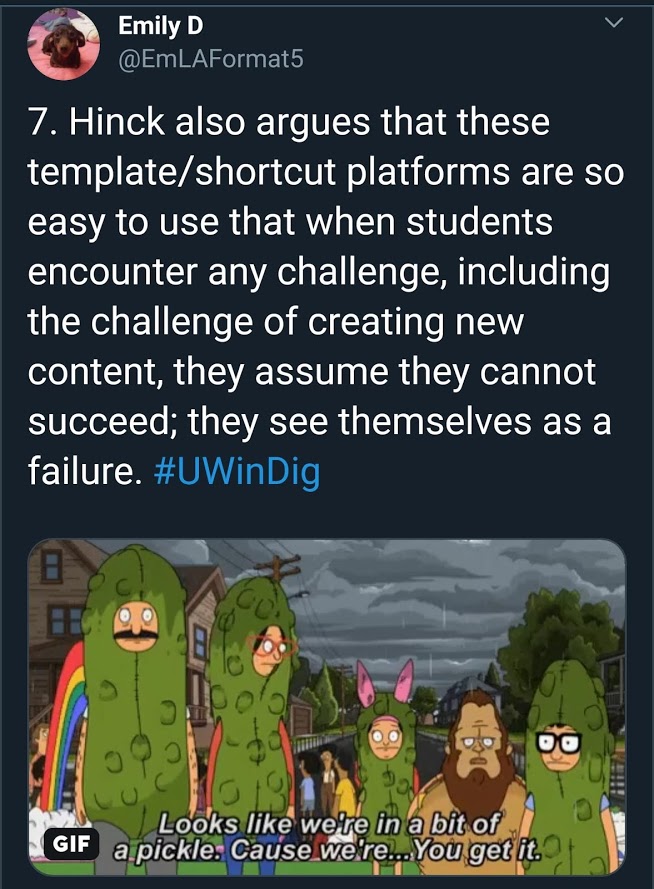
Hinck discusses the limitations of pre-made digital templates, and I had an interesting experience working within the limitations of Twitter. I haven’t used Twitter since high school, and I forgot how much editing it can take to get your tweet to fit the character limit. This was especially difficult for this assignment, where I had to figure out the best way to divide the text I wanted to include into separate tweets.
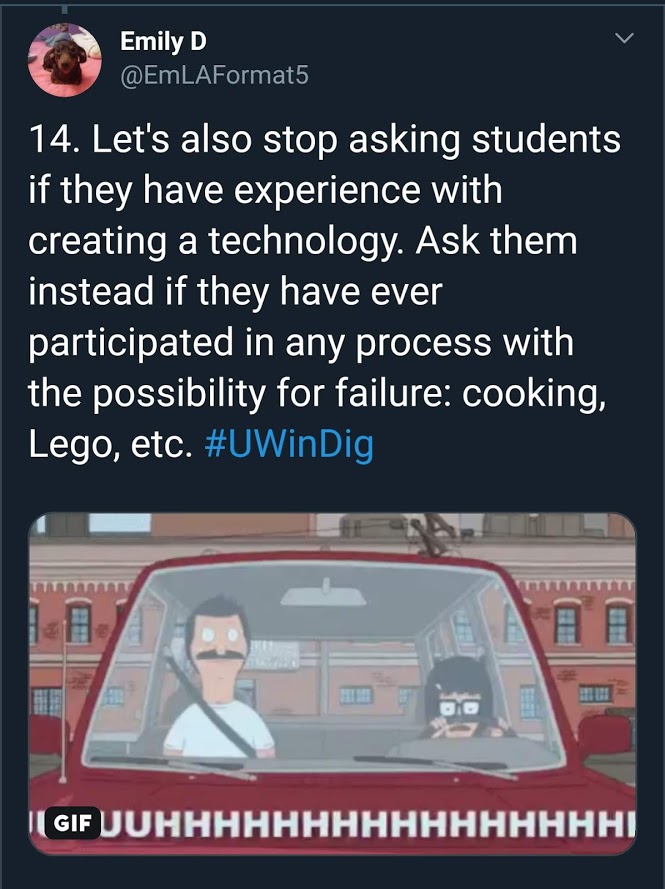
Although the character limit was frustrating, it really allowed me to see the affordances of Twitter as a platform for creating digital content. The thread function made it easy to keep all of my content contained, and the site itself is fairly user friendly. It did not take long for me to figure out the reply functions and learn how to add gifs to my tweets. Twitter is a good tool to use to create content if you do not have a lot of technological experience. It is definitely a tool that I can, and most likely will, utilize with my own students.
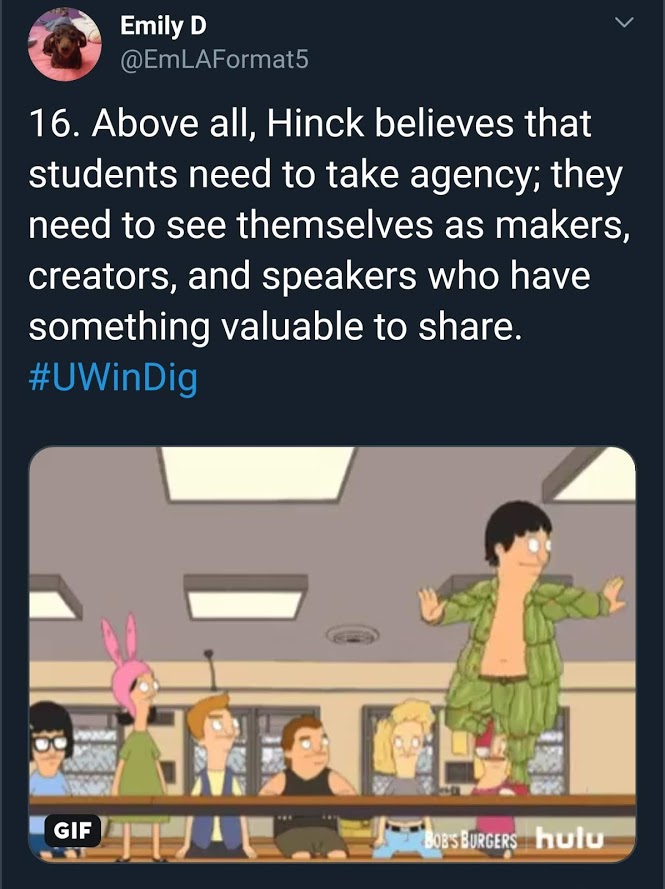
After creating a Twitter essay, I can see firsthand what Hinck is talking about. I had the luxury of pre-made gifs and a clear word limit. So I had creative licence, but it was within limits. I don’t think we should discount template/shortcut platforms completely, because we can accomplish a lot within their restrictions, but there should be a push for new creative content that does not place limitations on a student’s ideas.
